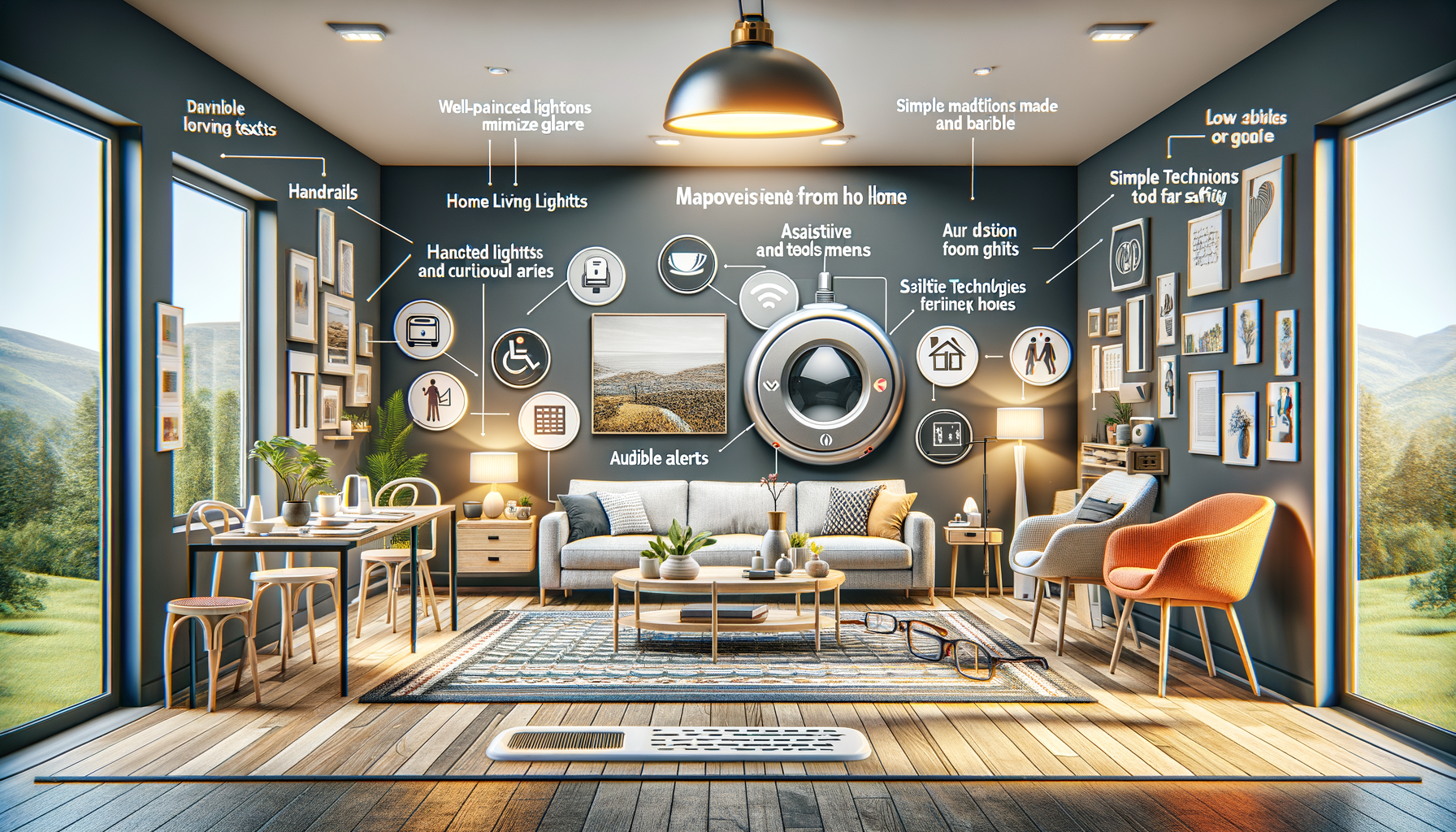Ways to Adapt a Home for Seniors with Low Vision Macular Degeneration
Navigating a familiar space can present new challenges when vision diminishes, impacting daily comfort and safety within the home. Subtle adjustments can significantly enhance independence and ease movements throughout personal environments. Exploring modifications offers potential solutions for individuals experiencing changes in sight.

Lighting is Key: Enhancing Visibility and Reducing Glare
For individuals with low vision due to macular degeneration, proper lighting can make a significant difference in daily life. The strategic placement of lights can enhance visibility and reduce the risk of accidents. It’s essential to focus on areas where tasks are performed, such as kitchens, bathrooms, and reading nooks. Task lighting, like adjustable lamps, can be particularly beneficial as they allow users to direct light exactly where needed. Moreover, consider using LED bulbs, which offer bright, consistent light and are energy-efficient.
Another critical aspect is reducing glare, which can be uncomfortable and disorienting. Using matte finishes on walls and furniture can help minimize glare. Additionally, curtains or blinds that diffuse sunlight can prevent harsh reflections on surfaces. It’s also wise to install dimmer switches, allowing for the adjustment of light intensity based on the time of day and activity. These small changes can significantly enhance the living environment for those with vision impairments.
Incorporating these lighting strategies not only improves visibility but also contributes to a safer and more comfortable home environment. By understanding the unique lighting needs of individuals with macular degeneration, families can create spaces that support independence and ease of movement.
Assistive Technology and Gadgets That Empower Independence
Technological advancements have paved the way for a variety of assistive devices designed to aid those with low vision. These gadgets can empower individuals by providing tools to perform tasks that might otherwise be challenging. For example, electronic magnifiers can enlarge text and images, making reading and viewing photographs more accessible. Similarly, voice-activated assistants can help with daily tasks such as setting reminders, making phone calls, or controlling smart home devices.
There are also apps designed to assist with navigation and object identification. These applications can describe surroundings, read text aloud, and even recognize faces. Wearable technology, such as smart glasses, can enhance vision by providing real-time information about the environment. These devices are particularly useful for outdoor activities, helping users navigate unfamiliar areas with greater confidence.
By integrating assistive technology into daily life, individuals with macular degeneration can maintain a level of independence that might otherwise be compromised. These tools not only facilitate everyday activities but also enhance quality of life by enabling participation in a broader range of activities.
Simple Home Modifications for Safety and Comfort
Making simple modifications to the home can greatly enhance safety and comfort for those with low vision. One effective strategy is to increase contrast in the home. This can be achieved by using contrasting colors for walls and furniture, making it easier to distinguish between different elements in a room. For example, using dark rugs on light-colored floors can help define walking paths.
Another important modification is to ensure that pathways are clear of obstacles. This includes securing loose rugs, removing clutter, and ensuring that furniture is arranged to allow for easy movement. Installing handrails in hallways and staircases can provide additional support and stability.
Consider also the use of tactile markers on key appliances or areas. These markers can help individuals locate buttons on a microwave or identify the correct setting on a washing machine. Simple changes like these can significantly reduce the risk of accidents and promote a safer living environment.
By focusing on these straightforward modifications, families can create a home that supports the needs of individuals with macular degeneration, promoting both safety and comfort in everyday living.